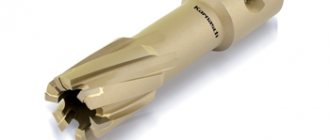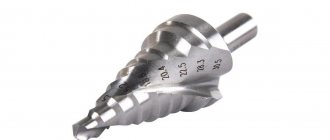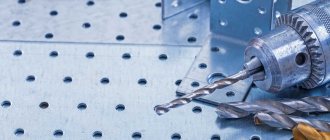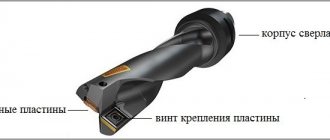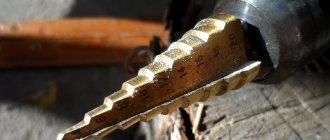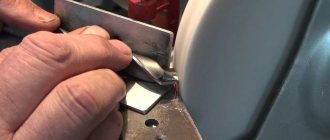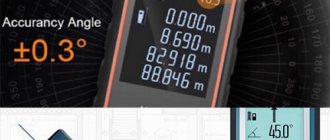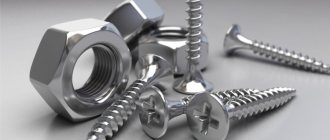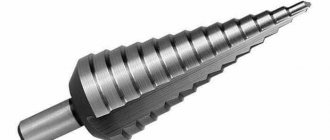The density of the metal is so high that special tools and mechanisms must be used to process it. In order to make a hole in this material, drills and drilling machines are used, in which drills are the main cutting element.
Which metal drills are better? It is not easy to determine, because there are no universal products that would be suitable for processing all types of metal products. An experienced craftsman will be able to “by eye” determine the type of metal and quickly select the appropriate cutting tool for processing.
A beginner in this business needs to start with the basics. First, study the classification of drills and their scope of application, because the best models are products that are ideal for processing a specific type of metal.
What kind of drills there are, how to choose a suitable product for the job based on markings and appearance, find out in the article.
Types of drills for metal
To choose the best models, you need to understand the types of drills.
Spiral
Classic, cylindrical drills that are most often used for drilling metals. Typically, spiral products are made of HSS steel.
The material is a high-quality cutting type of steel, so the gimlets made from it are highly durable and durable.
Video:
Conical (stepped)
The cutting surface has the shape of a cone, which is why this type of drill got its name. Conical drills are used to make holes in thin metal, as well as to correct defects from other cutting tools.
What are the best step drills to choose? Depends on the type of metal being processed. If the density of the workpiece is too high, then it is better to purchase more expensive, golden-colored products.
In everyday life, this type of drill is rarely used. If you need to frequently drill thin metal sheets or process soft materials, then despite the relatively high cost, it should be purchased for your home workshop.
Video:
Core cutters (annular cutters)
The cutting tool is a cylinder with a cutting edge, which is used to cut metal.
The energy consumption for making a hole in this way is several times lower, due to the small contact area of the tool with the surface being processed.
The advantage of using this type of drill over others is the production of large diameter holes. In this case, it is possible to obtain better quality edges than when working with spiral models.
Video:
Feathers
A special type of flat gimlet with replaceable working edges is used for drilling metal. Such products allow you to make high-quality, perfectly straight holes.
The absence of distortion during the drilling process and the ability to make a large-diameter hole in various metal structures allows many craftsmen to abandon the use of spiral products.
The low cost of feather drills allows in many cases of metal processing to call them the best for drilling holes.
These are the main types of drills used for making holes in metal structures.
Video:
https://www.youtube.com/watch?v=X7cO2DOdXf8
How to drill hardened steel at home with a regular drill - Turner
To improve the basic characteristics of the metal, it is often hardened. This technology involves increasing the hardness of the product due to strong heating of the metal and its rapid cooling.
In some cases, after heat treatment it is necessary to perform drilling. By increasing this characteristic, drilling hardened metal becomes more difficult.
Let's take a closer look at all the features of drilling hardened steel.
Drilling a hole in hardened steel
The widespread question of how to drill through hardened steel can be associated with the fact that when using conventional technology, the tool quickly becomes dull and becomes unusable. That is why you need to pay attention to the features of drilling hardened alloy. Among the features of the technology, we note the following points:
- It is necessary to properly prepare the hardened workpiece.
- In some cases, a special tool is required.
- Coolant is being used.
If necessary, you can make a drill for hardened steel with your own hands, which requires certain equipment and skills. However, in most cases, a purchased version is used, since it will cope better with the task when cutting hardened steel.
Hardened steel drilling process
Nuances when drilling
The technology in question has a fairly large number of features that need to be taken into account. Drilling of hardened metal is carried out taking into account the following points:
- Before carrying out work, pay attention to the hardness of the surface. This parameter is used to select the most suitable drill. Hardness can be determined using a variety of technologies.
- During drilling, a large amount of heat is generated. This is why rapid wear of the cutting edge occurs. In this regard, in many cases, cooling liquid is supplied to the cutting zone.
- When cutting difficult-to-cut material, it is necessary to sharpen the cutting edge from time to time. For this, a conventional sharpening machine or a special tool is used. Only diamond-coated wheels are suitable as an abrasive.
Steel Drilling Tool
There are a variety of methods for cutting hardened steel. Some of them significantly simplify the processing. Only by taking into account all the nuances can the quality of the resulting hole be improved.
Useful drilling techniques
A variety of technologies can be used to work with hardened steel. The most common technologies are characterized by the following features:
- Surface treatment with acid. This technology is characterized by long-term use, since it takes quite a lot of time to reduce the surface hardness. Sulfuric, perchloric or other acid can be used for etching. The procedure involves creating a lip that will contain the substance used in the cutting zone. After prolonged exposure, the metal becomes softer, and it will be possible to drill using the conventional version.
- You can use a welding machine to achieve your goal. When exposed to high temperatures, the metal becomes softer, which greatly simplifies the procedure.
- Most often, a special drill is used. There are versions on sale that can be used for processing hardened steel. In their manufacture, metal with increased resistance to wear and high temperatures is used. However, the complexity of manufacturing and some other points determine that the cost of a special tool is quite high.
In addition, to achieve this goal, a punch is often purchased. It can be used to make a small hole, which will simplify further drilling.
Use of lubricants
When drilling through hardened steel, serious friction occurs. That is why it is recommended to purchase and use various lubricants. Among the features of this processing method, we note the following points:
- First, the drilling area is processed. A small amount of lubricant is applied to the surface where the hole will be located.
- Oil is added to the cutting edge. To process hardened steel, a small amount of the substance is required, but it must be added from time to time, since it scatters when the tool rotates.
- During work, it is recommended to take breaks to cool the cutting surface and the surface being processed.
Lubricating steel with special oil
Special oil not only simplifies drilling, but also increases the service life of the tool used.
This is because oil can reduce the temperature of the cutting edge.
Drill selection
Twist drills, which are represented by a vertical rod with two grooves, have become quite widespread. Due to the specific arrangement of the grooves, a cutting edge is formed. Among the features of the choice, we note the following points:
- The pobedite drill bit has become quite widespread. It can be used to work with various hardened alloys. However, a surface with too high hardness cannot be processed with such a tool.
- The choice is also made based on diameter. It is worth considering that it is quite difficult to obtain a large diameter hole. The larger diameter version is much more expensive due to the use of a large amount of material in its manufacture.
- Attention is also paid to the sharpening angle, the purpose of the product and the type of material used in manufacturing. For example, cobalt versions are characterized by higher resistance to high temperatures.
- It is recommended to pay attention to products exclusively from well-known manufacturers. This is due to the fact that Chinese versions are manufactured using low-quality materials. However, such an offer is much cheaper and can be used for short-term or one-time work.
- When choosing a drill, you can be guided by the markings. It can be used to determine which materials were used in production. The diameter of the hole that can be obtained when using the tool is also indicated.
Drill for hardened steel
In a specialized store you can find almost everything you need to carry out the work. However, the fairly high cost of the product and some other factors determine that some decide to make a drill themselves from scrap materials. Similar work can be done if you have the required tools.
Making a homemade drill
If necessary, a drill can be made from hardened steel. Among the main recommendations for carrying out such work, we note:
- Rods are selected that are made from tungsten and cobalt alloys. People call this metal victorious. Compared to a conventional drill, this version is characterized by increased wear resistance.
- To process the workpiece, you need to secure it in a small vice. Otherwise, the work will be quite difficult.
- To sharpen such a surface, a diamond stone is required. The usual one will not withstand long-term work.
- The end surface is sharpened to create a surface that resembles a flat-head screwdriver. The cutting edges are then sharpened to produce a sharp tip.
In order to reduce the degree of surface machinability, oil is added. This ensures long-term processing due to reduced friction and lower temperature.
Homemade drill bits
In conclusion, we note that processing of hardened steel should be carried out exclusively with the use of special tools. The work requires a drilling machine, since a manual one will not allow you to get the required hole.
Source:
How to drill hardened steel at home with a regular drill - consider in detail
/ Technologies /
How to drill high-speed steel grade P6M5 or HSS according to the European designation? For example, we made a knife from a blade from a mechanical saw, and we need to drill holes in it with a diameter of 5-6 mm for pins to install and secure the handle pads.
The same operation may be needed to drill a hacksaw blade for metal from 1Х6ВФ steel, from which you can make some useful products. A piece of blade from a mechanical saw made of 9HF steel is suitable not only for making knives, but, for example, also non-standard keychains.
Burning by electroerosive method
For this purpose, portable and stationary electroerosive copying and piercing machines are used. The technology involves burning out the rod of a broken tap with an electrode of suitable diameter and subsequent removal of the petals. The thread is not damaged.
Photo: portable EDM copying and piercing machine “Puncher 800”
God bless those who get up early
Classification of drills by material of manufacture
Which metal drills are the best for drilling particularly strong alloys is quite simple to answer:
- To process such material, you should choose products that have a plate of increased hardness on the cutting edge. Such gimlets are the best for processing hard alloys.
- The price of such products is low due to the fact that the main body of the cutting tool is made of ordinary tool steel.
Drills made of metal alloyed with cobalt have good characteristics.
They can withstand increased mechanical loads and excessive heating of the working surface during operation. The cost of the products is high, but if it is necessary to make holes in a hard alloy, then cobalt analogues are the best for performing such work.
Titanium drills are not inferior in strength to cobalt drills, and when drilling alloy steels and non-ferrous alloys they show even better results.
When used correctly, titanium models retain their factory sharpness for a long time, which will allow you to perform a significantly larger volume of work.
Video:
Inexpensive metal drills are made from ordinary high-speed steel P9 and P18. The cutting tool copes with its function perfectly, but the working surface quickly becomes dull, especially when a certain temperature threshold is exceeded.
How to drill through stainless steel. Tips for choosing a drill for stainless steel
Parts and objects made from stainless steel are widely used in industry and everyday life. Stainless steel is popular due to its anti-corrosion properties. Corrosion resistance significantly extends the service life of engineering parts, structural metal structures, plumbing elements and household items. In addition, most grades of stainless steel are distinguished by high hardness, strength and, at the same time, toughness of the material. These properties have a positive effect on the performance characteristics of elements made from them, but make them difficult to process.
Often when working with stainless steel parts, it becomes necessary to make holes in them. Drilling holes in stainless steel is somewhat more difficult than in ordinary unalloyed or lightly alloyed steels. In the article below we will discuss how to drill a hole in stainless steel.
Choosing the right drill bit for stainless steel
Conventional metal drills are not suitable for stainless steel. Therefore, for normal drilling, you need to figure out how to drill through stainless steel.
If you need to drill a material in a product with a small thickness of 1 to 2 millimeters, then you can try using an ordinary spiral drill for metal. The cutting edges of such a drill must have a sharpening angle of 120 degrees.
It is important to drill at a low rotation speed (about 100 rpm).
If the thickness of the metal is greater or less than that indicated above, then it is better to prepare special drills for stainless steel before starting work.
Cobalt alloyed steel drills are well suited for drilling stainless steel. cobalt must be at least 5%. Such steels usually have a pale yellowish tint on the surface.
Foreign steels usually have the “Co” sign in their markings or trade designations, sometimes indicating the cobalt content as a percentage. Another important alloying element is tungsten, which should contain up to 20%. Cobalt drills are manufactured according to the DIN 338 standard. The main dimensions of this type of drill are specified in GOST 10902-77.
One of the suitable grades of steel for a stainless steel drill is P6M5. It contains more than 5% vanadium, molybdenum and tungsten. The letter “P” at the beginning of the marking indicates that this steel is high-speed. Foreign analogues of this brand are usually marked with the symbols HSS - high-speed steel. Such analogues can be steel S600-S601 or 1.3343 or M2. A stainless steel drill made from steels R6M5K5 and R18 is also suitable. The cutting edges are sharpened at an angle from 125 to 135 degrees.
If you want to make a hole in thin sheet steel (up to 1 millimeter), then it is best to use a conical step drill for stainless steel. The hole produced by such a drill will have precise dimensions, as well as high quality of the processed surfaces. It should also be made of cobalt alloy steel and have a yellowish tint.
Stainless steel drilling technology
If you have correctly selected the appropriate drill and already have something to drill stainless steel with, you need to understand the correct technology for metal-cutting operations. Since stainless steel is a hard material with high viscosity, it is important to drill using cutting fluids. This allows you to reduce heating of the working parts of the cutting tool, increase process productivity and reduce drill wear.
To make high-quality holes, several basic rules should be followed:
- If it is necessary to obtain a hole in a material with a thickness of 5 millimeters or more, then it is advisable to carry out the process in two steps - first, a preparation hole with a diameter of 2-4 millimeters is drilled, and then the final drilling is carried out to a given diameter.
- The rotation speed of the spindle of a metalworking machine or the chuck of a hand tool should be reduced in relation to working with non-alloy steels (for a drill this is 100-400 rpm, for machine tools - depending on the technological process).
- The supply of cooling and lubricating fluid must be carried out throughout the entire drilling process; the supply must be made to the cutting edges of the drill.
- If you use a stainless steel drill with a ground surface of the working part, the chip removal process will be more efficient and the internal surfaces will be smoother.
- You should work in the minimum drill feed mode and maintain uniform pressure on the hand tool.
- Observe safety precautions when working, use personal protective equipment.
How to drill stainless steel at home?
When performing plumbing work on drilling stainless metal, professional drilling machines are not always at hand. Not every home master can boast of having specialized equipment. Therefore, below we will provide brief information on how to drill stainless steel at home.
The main disadvantage of working in such conditions is the impossibility of uninterrupted supply of lubricating fluid to the working area. Therefore, if it is necessary to obtain a hole on a horizontal surface, the following method is used. The workpiece is aligned strictly horizontally and secured. The location of the future hole is marked and marked to facilitate alignment.
A piece of polymer or steel tube is installed on the hole. The internal diameter of such a tube should be slightly larger than the diameter of the drill. Then lubricating fluid is poured into the tube. If you do not have a special coolant, you can pour machine oil or even olive oil into the tube. Drilling must be done in this bath.
If liquid splashes or spills, refill the bath.
If the hole needs to be made on a vertical surface, then liquid lubricant will not work. In this case, you can use a small piece of pork fat or paraffin, which I fix at the drilling site. When the drill and workpiece are heated, the lubricant will gradually melt and enter the drilling working area.
Drilling a sink
The question often arises about how to drill a hole in a stainless steel sink. It is important to understand here that the sink should first be dismantled so as not to damage the plumbing elements and the bedside table. Then the sink needs to be installed on a flat horizontal surface. Next, the location of the future hole is marked and it is cored. If the hole is intended for installing a faucet and has a large diameter, then it is better to use a conical step drill, since the metal of the sink body is thin-walled.
If you are in doubt about how to drill stainless steel with a drill, then there are no big features from the technology described above. The main thing is to use the correct drill and ensure that it is well centered. Use a drill with speed control, set the torque to a position close to the maximum. A hand drill can help produce holes with a diameter of up to 10 - 12 millimeters.
The right lubricants
If the drilling process is carried out in an industrial environment on specialized metal-cutting equipment, then special compounds are used as a cutting fluid (coolant).
In this case, the use of self-made mixtures is not justified and can lead to damage to equipment and tools.
If the work is carried out in a home workshop, then the purchase of expensive consumables is not justified. They can be replaced with homemade coolant options.
You can prepare a lubricant based on ordinary machine oil, to which a certain amount of colloidal sulfur is added. Moreover, the sulfur must be ground into a fine powder.
Another option for preparing coolant at home is a composition based on sulfur and fatty acid. To prepare it, take bar soap and grind it on a grater. These pieces are then dissolved in hot water to form a thick soapy solution. Next, a technical solution of sulfuric acid is slowly poured into the container. As a result, fatty acids will rise to the top layer of the container. At the end, pour cold water into the container and wait until the fatty acids harden. Thickened acids are separated from the rest of the composition and mixed with sulfur in a ratio of 6 to 1.
Tricks for drilling stainless steel
As can be seen from the article, the process of drilling stainless steel is quite labor-intensive and requires certain skills and training.
We have prepared some useful tips on how to drill through stainless steel:
- When drilling, metal shavings should be long and come out in uniform sections; small, dark-colored shavings indicate that the rotation speed is incorrectly selected, and that the cutting edges of the drill are excessively heated.
- If you don’t have a prepared lubricant on hand, you can use regular vegetable or olive oil; pork fat or lard are also excellent.
- To work with thin sheet stainless steel, you can use a special drill bit for porcelain tiles.
- It is advisable to carry out the drilling process at a low speed of rotation of the cutting tool, and if the drill does not have a speed control function, drill by briefly turning it on and off for 2-3 seconds.
- If a cobalt drill is not available, you can use a pobedit tool with sharpening the cutting edges at 135 degrees.
- Before starting the drilling process, the workpiece should be punched, which will facilitate centering the drill.
- When drilling a workpiece of increased thickness, you can preheat the treatment area using a gas burner; when cooling, the heating can be repeated periodically.
- When processing thin stainless steel parts (up to 1 millimeter), you can use a high-quality wood drill bit; experience shows that the holes are smooth and of precise dimensions.
Source: https://sverlim.pro/sverlenie-nerzhavejki/
Marking of cutting products
Marking drills for metal is necessary to determine the type of steel from which the cutting tool is made. The product also indicates its diameter, accuracy class and manufacturer (country). Only spiral gimlets with a diameter of less than 2 mm are not marked.
In other cases, drill markings may have the following meanings:
- P9 - made of high-speed steel with a tungsten percentage of 9%.
- P9K15 - indicates the presence of cobalt in the high-speed steel in an amount of 15%.
- Р6М5К5 - indicates the presence of a complex composition of cutting steel containing tungsten, cobalt and molybdenum.
Imported products have the HSS designation, which can be used to determine the composition of the material from which the drill was made. The HSS drill, which will be explained below, is used with an additional letter, which determines the presence of alloying metal.
HSS marking:
- HSS-E - contains cobalt. Used in processing metals of high viscosity.
- HSS-Tin - has titanium coating, which significantly increases the hardness of the working surface, and the temperature resistance of the material increases to +600 degrees.
- HSS-E VAP is a cutting tool used for processing stainless materials.
- HSS-4241 - designed for drilling aluminum.
- HSS-R - have maximum strength.
By marking the cutting tool, you can determine for what metal and in what mode the drill can be used. If the marking is not visible, then the purpose of the drill can be determined by the color of the product.
Visual identification of drill type
By the appearance of the cutting gimlet, you can determine the type of material from which the products are made and thereby find out the mechanical strength of the sample. By color you can determine the composition and quality of workmanship.
Grey
Gray drills are made of metal that has not been subjected to any additional processing.
The quality of the tool, in this case, leaves much to be desired, but for one-time use such products are quite suitable.
Black
This color indicates that the tool was treated with superheated steam. During processing, the product acquires greater strength.
It perfectly tolerates numerous cycles of heating and cooling of the metal, and also maintains the sharpening of the working surface for a long time.
The price of black metal drills is not much higher than gray products, so if you have a choice, you should give preference to tools of this type when purchasing.
Dark golden
This color indicates that the cutting tool has been tempered. This type of processing significantly increases the mechanical strength of the product as a result of reducing internal stresses.
With a tempered drill, you can successfully process high-strength metals, so if you are drilling too hard alloys, it is recommended to purchase a similar model.
Bright golden
The bright golden color indicates that metal made with the addition of titanium was used in production.
Despite the high cost of such models, it is much more practical to purchase a high-quality drill than to use cheap cutting tools, which will need to be used in large quantities for complex work.
Thus, it is easy to determine the quality of products by appearance and decide which metal drills are best to buy.
Drills for drilling hardened metal - Metalworker's Handbook
When doing repairs, many owners have to perform a wide variety of work, among which drilling is quite common. However, to perform this task well, you must have a suitable drill available. There are no problems with purchasing this device, given that there are a large number of different types on the building materials market.
Therefore, every home craftsman who has purchased a drill should also worry about choosing good drills. Otherwise, they will quickly use up their service life, and you will have to spend money on new ones.
In stores you can find a large number of different drills, differing in length, diameter, and material for which they are intended. And even before you start creating a hole on the surface of the structure, you should decide on the appropriate drill size . To avoid mistakes here, it is necessary to take into account the type of work being performed.
Marking and color of metal drills
Those owners who have had to do drilling at least once, I think, tried to understand what material is used to make these devices, what is meant by the marking on the tool? What makes it possible to create holes on a surface made of the same material from which the drill itself is made?
The efficiency of working with a drill is achieved due to the fact that high-quality and high-strength steel is used as the material for it. But cheap options that are produced on a raw material basis are not able to cope with most of the problems that many owners face.
What does the drill marking mean?
Typically, the marking of a metal drill contains a certain set of letters and numbers . The letter of the main element is usually indicated first, followed by a number that corresponds to the percentage of this element in the material used to produce the drill.
After the first two characters, other elements are often specified.
- P – corresponds to tungsten;
- K - indicates cobalt;
- F - means vanadium;
- M – means molybdenum.
Most often, the labeling does not include the designation of chromium, since this element is necessarily included in the source material, in which its share is about 4%. Among the elements that are missing from the labeling, carbon should be highlighted. For example, if a drill is marked P7M6K6 , then it can be understood that the manufacturer used high-speed steel as a material, which contains tungsten in the amount of 7%, molybdenum - 6%, cobalt - 6%.
If you pay attention to domestic products, there is no such information. However, this applies primarily to products whose diameter is less than 2 mm. Devices with a diameter of 2-3 mm contain information about the geometry and grade of steel. Drills that represent other standard sizes have additional data: they also provide the trademark and sometimes the accuracy class of the drilling product.
What does the drill color mean?
Each of the offered drills can be designed in one of the following colors:
- bright gold;
- black golden;
- grey;
- black.
By the golden color, you can understand that the manufacturer used titanium nitride in the manufacture of the instrument. This operation provides such a drill with increased strength characteristics. Working with such a device will ensure less friction between surfaces.
A black golden hue indicates that the raw material contains a temper, the purpose of which is to eliminate internal stress.
The gray color indicates that the drill in question has not been finished in order to increase the level of protection and strength of the material. From this we can conclude that this device has a low level of workmanship, and therefore it will fail quite soon .
The black color suggests that during the manufacture of the drill, an operation was carried out that involved exposing the product to superheated steam. The benefit of it is to increase its wear resistance.
Advantages of cobalt drills for metal
Prices for cobalt metal drills are 4-5 times higher than regular ones. What makes them so popular among home craftsmen? What merits made them so highly rated?
A distinctive feature of cobalt is its high melting point . For this reason, metal drills, created on the basis of high-quality high-speed steel alloyed with cobalt, perfectly withstand high temperatures and demonstrate improved mechanical properties.
They are characterized by the ability to cope with significant thermal loads, for which they do not have to resort to additional cooling. Similar properties of these metal drills are primarily manifested in situations where it is necessary to create holes in high-strength alloy and high-viscosity steels.
Among other properties that cobalt metal drills have, we should highlight a fairly large sharpening angle of the tip, which is 135 degrees . Thanks to this design of the tip, it becomes possible to drill on smooth round surfaces.
These drilling devices can also be used to create holes in pipes and welds where high precision requirements are important. An important advantage of such metal drills is that when working with them, the master has to exert less physical pressure on them.
Drilling with a cobalt drill for metal
Even before you start drilling, you should decide the issue with the cutting mode. To clarify, let us inform you that the main parameters that affect such a mode are the following:
- Cutting speed . It is usually understood as the conditional peripheral speed of a drill for metal, which is demonstrated by the drill in relation to the element being processed. In other words, this parameter means the degree of rotation speed of the drill through metal. For example, it is possible to ensure the same cutting speed of 20 m/min, provided that a drill with a diameter of 1.0 is used for the work, and its rotation speed is 6366 times per minute, or you can use a device whose diameter is 10.0, and the frequency rotation is 637 rpm.
- Submission . We are talking about the degree of movement of the working device in the direction of the drilling axis over a period equal to one revolution. Accordingly, the unit of measurement is millimeter per revolution.
- Torque . This parameter determines the level of load that falls on the metal drill during cutting.
Each of the above parameters influence each other, and when choosing them it is necessary to take into account:
- The material in which the hole needs to be created;
- The material from which the metal drill is made is cobalt;
- Equipment used for work and type of cooling;
- Other factors, which include the degree of surface roughness, contamination, etc.
Features of drilling stainless steels
When creating holes in a stainless steel surface, you have to face problems that boil down to the fact that this material is characterized by sufficient ductility. Therefore, during operation, the drilling product sticks to the working surface, as a result of which the device heats up too much and subsequently fails.
This can be avoided if:
- The problem with heat removal will be solved, for which cooling is used;
- Work will be carried out with drills that best cope with heat and have the ability to better remove chips.
Source: https://ssk2121.com/sverla-dlya-sverleniya-kalenogo-metalla/
Classification by size
To choose the best drill and not overpay, it is enough to know what length sizes these products are usually divided into. If drilling metal does not require making deep holes, then purchasing models that are too long will lead to cost overruns.
It is customary to classify drills by length as follows:
- Short, 20-131 mm long. Tool diameters are in the range of 0.3-20 mm.
- Elongated, length is 19-205 mm, and diameter is 0.3-20 mm.
- Long series with a diameter of 1-20 mm and a length of 56-254 mm.
When performing drilling work of various depths, you should select the tool that is most suitable for the specific task.
The best manufacturers
To purchase drills and be sure that the declared characteristics are completely true, you need to choose the right manufacturer.
Companies that value their reputation do not sell products of inadequate quality. Therefore, when choosing metal drills, you should give preference to manufacturers who have been on the market for a long time.
Among the newcomers, there may also be worthy producers. But in order to find out that a good quality product is on sale, you need to make a purchase, which often represents a “lottery”.
The best manufacturing companies:
1. Bosch - products of the German company have long proven themselves only on the positive side. Despite the rather high price of the products, when purchasing Bosch drills, you can rest assured of excellent quality. It is convenient and profitable to purchase tools from this company as a set.
Whatever set of drills you take, each one will contain only the highest quality products that will last for many years, provided they are properly stored and used.
2. “Zubr” is a domestic manufacturer whose products are maximally optimized in terms of price-quality ratio. You can purchase the products of this company either in a single copy or in the form of a set. The latter option will significantly save money, despite the significant cost of the kit.
3. Soviet-made drills - this category of cutting tools can be classified as an “endangered species.” With due diligence, you can purchase a rarity that has unsurpassed technical characteristics.
Video:


